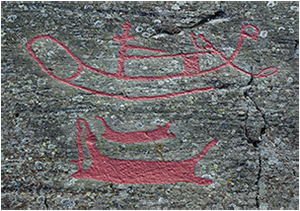Crossref Citations
This article has been cited by the following publications. This list is generated based on data provided by
Crossref.
Kristiansen, Kristian
and
Suchowska-Ducke, Paulina
2015.
Connected Histories: the Dynamics of Bronze Age Interaction and Trade 1500–1100bc.
Proceedings of the Prehistoric Society,
Vol. 81,
Issue. ,
p.
361.
Sabatini, Serena
2016.
Late Bronze Age Oxhide and oxhide‐like ingots from areas other than the Mediterranean: problems and challenges.
Oxford Journal of Archaeology,
Vol. 35,
Issue. 1,
p.
29.
Sørensen, Tim Flohr
2017.
The Two Cultures and a World Apart: Archaeology and Science at a New Crossroads.
Norwegian Archaeological Review,
Vol. 50,
Issue. 2,
p.
101.
Ling, Johan
Earle, Timothy
and
Kristiansen, Kristian
2018.
Maritime Mode of Production: Raiding and Trading in Seafaring Chiefdoms.
Current Anthropology,
Vol. 59,
Issue. 5,
p.
488.
Webb, Jennifer M.
2018.
Shifting Centres: Site Location and Resource Procurement on the North Coast of Cyprus over the Longue Durée of the Prehistoric Bronze Age.
Land,
Vol. 7,
Issue. 2,
p.
64.
Ling, Johan
Chacon, Richard
and
Chacon, Yamilette
2018.
Prehistoric Warfare and Violence.
p.
149.
Goldhahn, Joakim
2019.
Birds in the Bronze Age.
Radivojević, Miljana
Roberts, Benjamin W.
Pernicka, Ernst
Stos-Gale, Zofia
Martinón-Torres, Marcos
Rehren, Thilo
Bray, Peter
Brandherm, Dirk
Ling, Johan
Mei, Jianjun
Vandkilde, Helle
Kristiansen, Kristian
Shennan, Stephen J.
and
Broodbank, Cyprian
2019.
The Provenance, Use, and Circulation of Metals in the European Bronze Age: The State of Debate.
Journal of Archaeological Research,
Vol. 27,
Issue. 2,
p.
131.
Vandkilde, Helle
2019.
Bronze Age Beginnings – a Scalar View from the Global Outskirts.
Proceedings of the Prehistoric Society,
Vol. 85,
Issue. ,
p.
1.
Sabatini, Serena
and
Lo Schiavo, Fulvia
2020.
Late Bronze Age Metal Exploitation and Trade: Sardinia and Cyprus.
Materials and Manufacturing Processes,
Vol. 35,
Issue. 13,
p.
1501.
Horn, Christian
Ling, Johan
and
Peternell, Mark
2021.
Encyclopedia of Global Archaeology.
p.
1.
Wang, Xiaoting
Yang, Yingdong
Wang, Tianyou
and
Luo, Wugan
2022.
Subdivision of culture and resources: raw material transformation and cultural exchange reflected by bronze poleaxes from the Warring States sites in the Chengdu Plain.
Archaeological and Anthropological Sciences,
Vol. 14,
Issue. 7,
Powell, W.
Barjamovic, G.
and
Pulak, C.
2024.
Copper for the early oxhide ingots traced to the South Urals.
Journal of Archaeological Science: Reports,
Vol. 56,
Issue. ,
p.
104583.
Fauvelle, Mikael
2025.
The Trade Theory of Money: External Exchange and the Origins of Money.
Journal of Archaeological Method and Theory,
Vol. 32,
Issue. 1,
